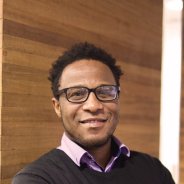After spending years preparing to apply for Engineering Chartership, Boniface Kinnear joined Woods in 2020 where he found the help and support that he needed to cross the finish line. Find out how Woods supports engineers in obtaining Chartership and why it is important.
Boniface Kinnear is a professional civil and environmental engineer who joined Woods in 2020. With over 17 years of experience, Boni is a big proponent of encouraging engineers to become chartered to give them a better name within the industry. Outside of work, he is an avid runner. Read on to find out why Woods is an attractive company for engineers and how pursuing Chartership is like training for a marathon…
Since joining Woods in 2020, I keep asking myself, why didn’t I join this company earlier? I love the company culture, it’s a likable company to work with. There is a generally friendly atmosphere and it’s relaxed but the people are professional. It makes it easy to collaborate on various projects. It’s a very attractive company to work for.
Why is Woods an attractive company for engineers?
Culture aside, Woods provides valuable opportunities to learn, develop, and explore areas you are interested in. If you want to pursue a specific niche within the company mandate, management is quite supportive of that. The company itself provides a lot of opportunities to pursue various avenues within land development.
Engineers are encouraged and supported to pursue Chartership, either through the Woods Graduate Development Programme (more on this below) or Knowledge Assessment for non-standard pathways. Beyond Chartership, Woods encourages employees to pursue continuing professional development (CPD) and offers time within the work-week to focus on this. Support with further studies is also possible.
I think that for a lot of engineers - especially young engineers – having the confidence that they are working for an organization that will give them opportunities to grow makes it a lot easier to continue with the profession.
What is Engineering Chartership and why is it important?
Engineering Chartership is the mark of competence within the industry. It gives clients, regulatory bodies, and fellow practitioners the confidence that they can rely on your judgment and professionalism in your particular respective field of practice. Certain work requires sign off by a Chartered Professional Engineer for this reason; we take an oath and make an ethical commitment to do the right thing.
Becoming Chartered also makes it easier for engineers to advance within the industry. It opens the door for new career opportunities - higher earnings and leadership positions. It is quite an attractive achievement that is worth the pursuit of in and of itself.
Currently, there are fewer Chartered Professional Engineers in the industry than unchartered. I always encourage engineers to pursue Chartership but also to talk about it to their respective companies and supervisors and ask them to set up a programme to help them through the process. If we can increase the number of Chartered Engineers we have, it will give us all a better name within the industry.
Get Ready: The Engineering Chartership Process at Woods
At Woods, we have an in-house training programme – the Graduate Development Programme - that puts all engineers on the path to pursuing Chartership through mentoring and advice. Internal and external advisors hold seminars, help engineers choose the right projects to work on and navigate the complexities of the application.
Mentors are available to staff and an external assessor is available to review applications and provide valuable feedback before lodging applications to Engineering New Zealand. In my case, by the time I joined Woods I had already submitted my application, but it had not been reviewed by a keen eye. Woods helped me with making the right changes so I could resubmit my application and put my best foot forward.
As part of the Chartership process, there is also an interview with Engineering New Zealand. Woods helps their engineers prepare for this by holding mock interviews with an internal advisor/supervisor familiar with the process. By the time I got to my interview with Engineering New Zealand, I felt well prepared - I’d been given a chance to get ready.
It was great to join Woods and get the help I needed to get across that finish line after spending years preparing for my Chartership.
How pursuing Engineering Chartership is like training for a marathon
I’m a runner so bear with the sports analogies…
1) It’s a long process, it pays to start early.
Preparing for your Chartered Professional Engineer application is a marathon, not a sprint. It takes 4-6 years to accumulate enough experience to be ready to apply. Start thinking about the process early. You tend to forget some of the really nice projects you have worked on, so start keeping good records right away.
2) It gives you something to strive for and it helps you focus your training.
When you register for a marathon, it helps with your training. When you are striving towards Chartership, it helps you with all other aspects of your professional development.
3) There is always another race to train for.
When you become a Chartered Professional Engineer, your training doesn’t just stop there. Yes, Chartership might be the goal and the mark of competence, but just like being a runner, it’s about the process of ongoing training and development (CPD) rather than crossing a particular finish line.
If you’re interested in taking your career to the next level with Woods, visit our careers page for more information.
Boniface Kinnear - Associate 3 Waters Engineer

